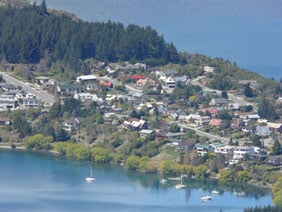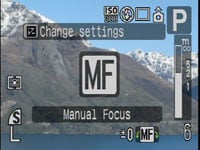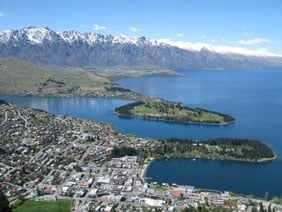Canon PowerShot G9
-
-
Written by Gordon Laing
Canon PowerShot G9 lens coverage
More features : Lenses / Screen and menus / Sensor and processing / anti-shake
Canon PowerShot G9 features
Lenses / Screen and menus / Sensor and processing / anti-shake
The Canon PowerShot G9 is equipped with the same 6x optically-stabilised zoom as its predecessor which delivers an equivalent range of 35-210mm; the actual optical specification is 7.4-44.4mm f2.8-4.8. Like most compacts the actual zoom lurches slightly from one focal length to the next – we counted 13 discrete steps in all, and the current position in the range is indicated by a graphical bar on the G9’s screen. The closest focusing distance in macro mode remains a very impressive 1cm and we have some examples of how you might use this in our G9 Gallery.
The G9 is pictured above in three states from left to right: powered off where the lens retracts entirely within the body, powered-on where the lens extends by 29mm, and zoomed-in where the lens extends to 44mm.
To illustrate the G9’s 35-210mm equivalent coverage we mounted it on a tripod and shot the same scene fully zoomed-out, then fully zoomed-in. We then shot the same scene moments later using the Panasonic Lumix FZ18 super-zoom which is equipped with an impressive 18x range equivalent to 28-504mm.
|
Canon PowerShot G9 coverage wide |
Panasonic Lumix FZ18 coverage wide | |
 | ||
7.4-44.4mm at 7.4mm (35mm equivalent) |
4.6-82.8mm at 4.6mm (28mm equivalent) |
The examples above were taken with the Canon PowerShot G9 and Panasonic Lumix FZ18 zoomed-out to their widest positions. While the FZ18 was tilted slightly upwards here to better-frame its maximum zoom example, it’s still clear how much more you can fit in with 28mm equivalent coverage compared to 35mm. This is one aspect where the G9 – and many Canon compacts – are being left behind by the competition. So please Canon, can we have a 28mm wide angle on the G9’s successor? (and all your other compacts too!)
Below are examples taken with each camera fully zoomed-in, and while the G9 performs respectably with its 210mm equivalent, it’s clearly no competition for the massive 504mm equivalent coverage of the FZ18. Of course while the FZ18’s main body section is roughly the same size as the G9, the protruding lens housing adds almost 50mm to its thickness, and there’s a grip too. As such, while the FZ18 is pretty small, it’s by no means pocketable in the same way as the G9. So if you demand the greater coverage, go for a super-zoom, but if you want something which will fit into a pocket, then the G9 represents a unique combination of power and flexibility for its size.
Canon PowerShot G9 coverage tele |
Panasonic Lumix FZ18 coverage tele | |
 |  | |
7.4-44.4mm at 44.4mm (210mm equivalent) |
4.6-82.8mm at 82.8mm (504mm equivalent) |
Like its predecessor, the PowerShot G9’s coverage can be widened or extended using two optional converter lenses. The TC-DC58C tele-converter applies a 2x magnification, delivering a maximum equivalent focal length of 420mm, while the WC-DC58B wide converter applies a 0.75x factor, allowing the G9 to deliver a widest equivalent focal length of 26.25mm.
These converters fit onto the G9 via the optional LA-DC58H conversion lens adapter, which itself clips onto the body after removing the existing ring surrounding the lens. Like most lens attachments, both accessories add considerably to the G9’s overall size and weight – and this could be an issue with the camera’s minimal grip – but at least the option’s there if you need it.
Canon PowerShot G9 focusing
The PowerShot G9 offers three main focusing modes: 9-point AiAF, FlexiZone, which uses an adjustable smaller frame, and Face Detect, where the camera automatically tracks one or more faces in the frame. FlexiZone is only available in Program, Manual, Aperture and Shutter Priority modes; if you’re in Auto or a Scene preset, it’s replaced by an AF area which is fixed in the centre.
Both the AiAF and FlexiZone frames can be reduced in size if desired, and doing so also allows you to make small adjustments to the position of the former; the FlexiZone frame can be moved around at all times. In practice FlexiZone felt a little quicker than AiAF, with less searching. Focusing was reasonably quick for a compact, but not in the same league as Sony’s industry-leading Cyber-shot H9 or a DSLR equipped with a good lens.
 |
The earlier G7 had Face Detection, but this has been improved on the G9 thanks to the inclusion of Canon’s latest DiG!C III image processor. The PowerShot G9 can now detect up to 35 faces in a frame and allows you to manually choose which you’d like to track; it can also adjust the flash exposure for subjects positioned close to the camera. In use it proved very effective, identifying and tracking faces even under relatively dark conditions, while also avoiding blown highlights with careful control over the flash.
Like its predecessor, the G9 offers a manual focus mode with a window in the centre showing a 2x magnified view and a distance scale running vertically down the right side. The focusing increments are quite fine and adjusted using the rear-mounted control wheel; it’s possible to achieve reasonably accurate adjustments, especially on closer subjects. Focus bracketing is also offered which takes one photo at the manual focus position, followed by one focused a little closer and one a little further; the extent of the closer and further focusing distances can also be adjusted.
Canon PowerShot G9 viewfinder
The PowerShot G series have always featured an optical viewfinder in addition to their main colour monitors, and Canon’s wisely kept this alternative for composition on the G9. Optical viewfinders may seem primitive compared to using a nice, big colour screen, and it’s slightly quaint to see the G9’s lens appearing in the corner when it’s zoomed-out, but there are benefits.
The main benefit is having an alternative means of composition when the colour screen becomes hard to view, such as under direct sunlight. Since you’re not using any power to illuminate a colour screen when composing with the optical viewfinder, you’ll also extend your battery life, so they can be handy for squeezing out some final shots from a failing battery.
Of course it’s unlikely you’d use the viewfinder exclusively for composition and unlike the screen the G9’s viewfinder only shows 80% coverage. You also can’t view exposure information nor any focus indications beyond a simple light, but it’s still good to have as an option.





